updated 04/12/2017
![]()
updated 04/12/2017
May's Prairie, Lansing twp. |
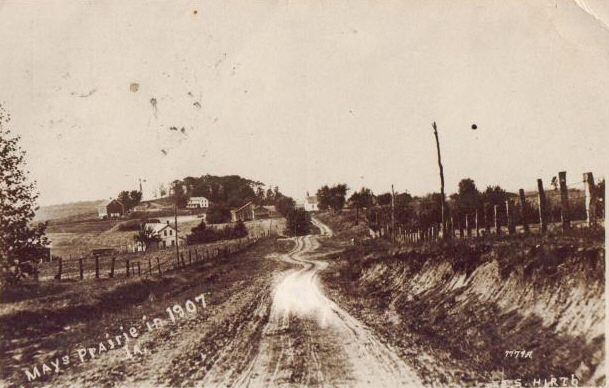
May's Prairie 1907
~contributed by Jan Miller
March 2009, from Janet Koozer:
"In this picture you can see the school down on the
right side of the road."
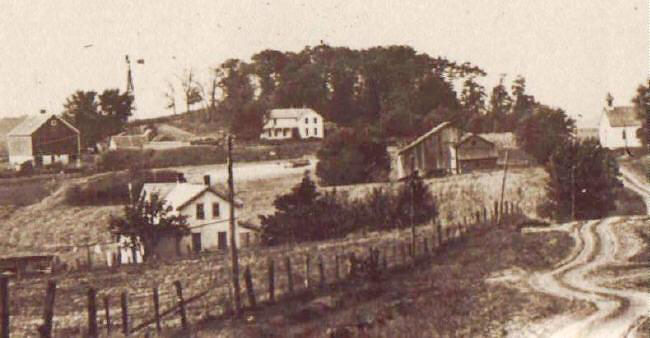
Close-up of the above photo of May's
Prairie
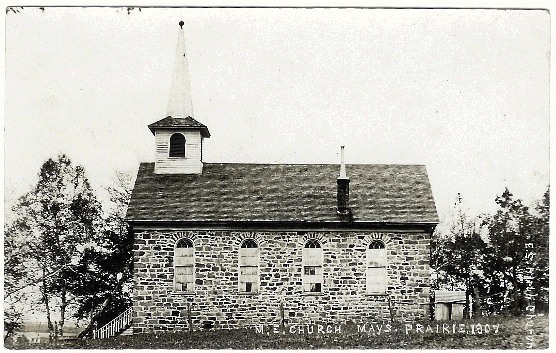
May's Prairie M.E. church,
1907
~contributed by Diana Diedrich
March 2009, from Janet Koozer: "Esther Dee said that the Rock church (M.E. church) was located on the hill to the left of the person who took the top photo (on this page) in 1907. The distant farm on the left is where Lee Feuerhelm currently lives at this time. The other old house isn't there anymore."
~*~*~ ~*~*~ ~*~*~
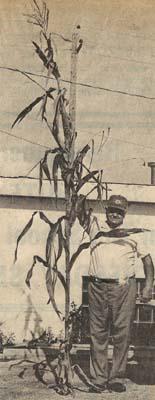 |
Cletus Dee of rural Lansing stands next to a stalk of
Pioneer corn from one of his fields in Mays Prairie.
Cletus has grown lots of good corn in his life, but he's
never had a stalk 12 feet, three inches high. The plant
had five ears, two of which were well developed. |
~*~*~
There may be an energy crisis nationwide, but out on Mays Prairie are two senior citizens who haven’t let the problems of 1979 reduce their own work output. At least not by much.
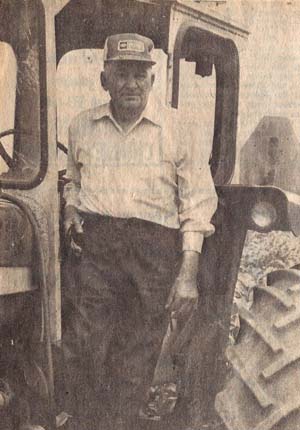 Leonard Dee
|
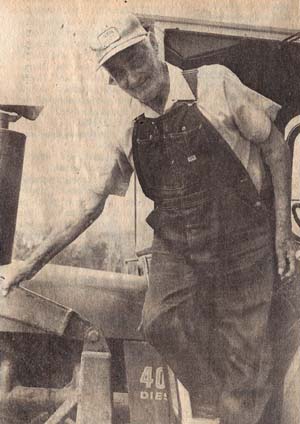 Andrew Geinzer
|
~*~*~
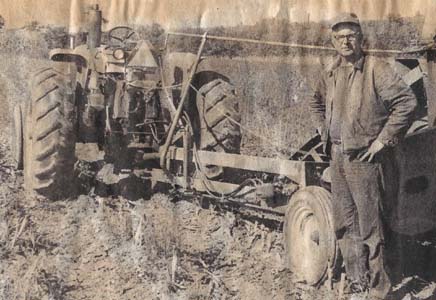
Bob Leppert
Mays Prairie farmer Bob Leppert knows he may be bucking a trend, but he’s convinced that there is a place for organic farming in today’s agriculture. When Bob talks about organic farming, he means growing crops without the use of chemicals. And on today’s productive farms these chemicals are the main component of pesticides, herbicides and fertilizers; all expensive items. For three years now Bob has been into organic farming. He has adopted the philosophy that this method may be a safer and more desirable way to practice soil conservation and promote the health of his livestock. As Leppert says, “The health of your farm animals starts right with the crops you feed them.”
He does use fertilizer, however, and this he must buy and apply in spring like any other commercially available product. The almost odorless pellets he puts on his fields are a lignite-based fertilizer, a step away from coal, says Leppert, and the stuff contains 32 known trace elements. Of course Bob must carefully rotate his fields, corn, to oats to hay, a practice followed years and years ago before the advent of today’s powerful fertilizers. He uses a chisel plow, too, which is becoming very popular among farmers who truly wish to save their soil. He cultivates his corn twice each spring, and some corn growers don’t do this at all these days.
Is it worth it? You ask Bob Leppert what kind of yield he got last year. Some of his early corn came out to 140 bushels an acre. His later corn yielded 180 bushels. He says he knows of about four other Allamakee farmers who are going the route of organic farming. As a neighbor and cousin, Donald Leppert, said, “Who “knows? Maybe we’ll all be doing this in a few years?” Last Tuesday, September 23, a Wonder Life farm tour was held at Leppert’s, and 33 people saw his operation. All of his crops look excellent.
~Allamakee Journal, Lansing, IA, Sept. 1980
~contributed by Errin Wilker
~*~*~